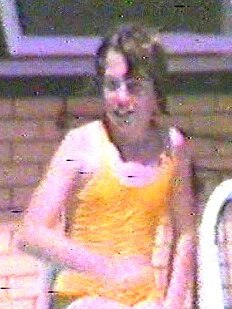South Australian professor behind the development of DNA in crime fighting retires as SA’s DNA database reaches new levels of success in helping to crack cases
The man behind the development of DNA as major crime fighting tool for police is retiring, just as SA’s database reaches new levels of success.
Behind the Scenes
Don't miss out on the headlines from Behind the Scenes. Followed categories will be added to My News.
Seventy per cent of all forensic samples criminals leave behind at crime scenes are now being matched to a profile already held on SA’s DNA database.
The link rate figure – equal to some databases around the world – has been reached just 21 years after SA’s database was established and earlier than forensic scientists had predicted.
The man who has spearheaded the initiative, Forensic Science South Australia director Professor Chris Pearman, believes it is now one of the best investigative tools police have in solving not just minor crimes such as house breakings, but homicides and sex offences.
“The higher the percentage of the population you have on the database, the higher the link rate and 70 per cent is about as good as you will see internationally,’’ he said.
“I think is a measure of the strength of SA’s legislation that enables police to collect samples from a wide range of offence types and from suspects as well as convicted persons.’’
Professor Pearman, who gave police their first lead in the Louise Bell abduction case when he was a forensic botanist in 1983, retired on Friday after a 42-year career – the past 21 years of it leading SA’s use of DNA crime fighting technology.
TODAY IN SA WEEKEND: SILENT SLEUTH: THE UNSUNG HERO OF SA CRIME FIGHTING
Under Professor Pearman’s guidance at FSSA the use of DNA technology has flourished from its introduction with the rudimentary Quadruplex system, through to the state-of-the-art and supersensitive Globalfiler and STARmix DNA interpretative software systems that have resulted in major breakthroughs in several of SA’s cold case murders.

Introduced in 1999, the legislation was amended in 2007 allowing suspect samples to be retained. Thanks to that amendment, SA’s database now has 148,000 person samples from either convicted criminals or suspects – 8.5 per cent of SA’s population – and 25,000 crime scene samples.
More recently, Professor Pearman has overseen the introduction of familial DNA technology. It enables police to identify an offender using the DNA of a close relative who is already on the database.
First used successfully in 2015 to catch and convict the North Adelaide rapist, it has also been responsible for the breakthrough in the 1993 cold case murder of Suzanne Poll.
“That is another area we have led Australia. The North Adelaide rapist conviction was the first in the country using this technology,’’ he said.


As a forensic botanist with SAPOL in 1983, professor Pearman examined the pyjama top belonging to schoolgirl Louise Bell in the weeks after her abduction, identifying a rare type algae on the top, giving Major Crime detectives their first lead in the baffling case.
Ironically, almost three decades later he would oversee the extraction of a DNA profile from material left on the top by Louise’s killer – this time giving detectives the crucial evidence needed to charge and eventually convict paedophile Dieter Pfennig with her murder.
Despite being involved in literally hundreds of SA’s high-profile cases over during his career, he views the breakthrough in the Louise Bell case as one of the most significant.
“Pfennig had been a suspect for a long time, for me it was a sense of the completion of a circle if you like, of my career,’’ he said.
Attorney-General Vickie Chapman said Professor Pearman had made “an outstanding contribution’’ to the field of forensic science and had helped place SA at forefront of DNA technology.
“Under the leadership of Professor Pearman, Forensic Science SA has led the nation in cutting edge research,’’ she said.
Ms Chapman said besides being a strong advocate for harnessing the latest techniques and technology and applying them in SA, Professor Pearman had given expert evidence in hundreds of court cases and created legal case law.
“I sincerely thank Professor Pearman for his leadership of Forensic Science SA and his contribution to public service and justice in our state,’’ she said.
More Coverage
Originally published as South Australian professor behind the development of DNA in crime fighting retires as SA’s DNA database reaches new levels of success in helping to crack cases



